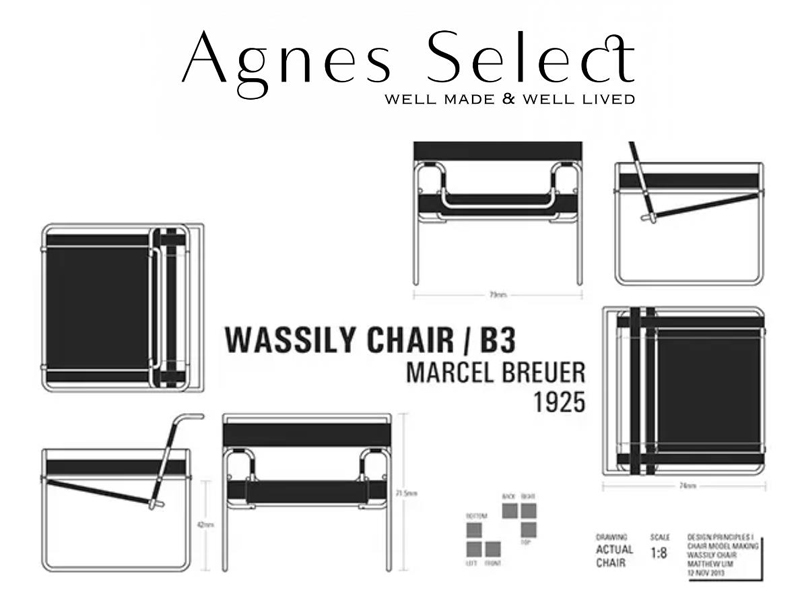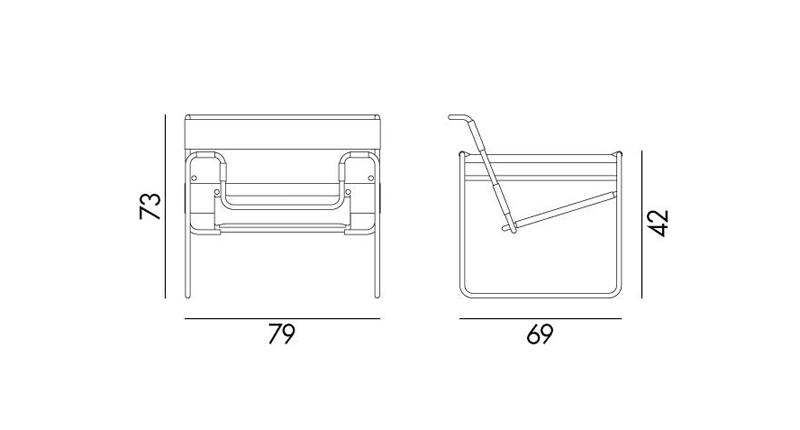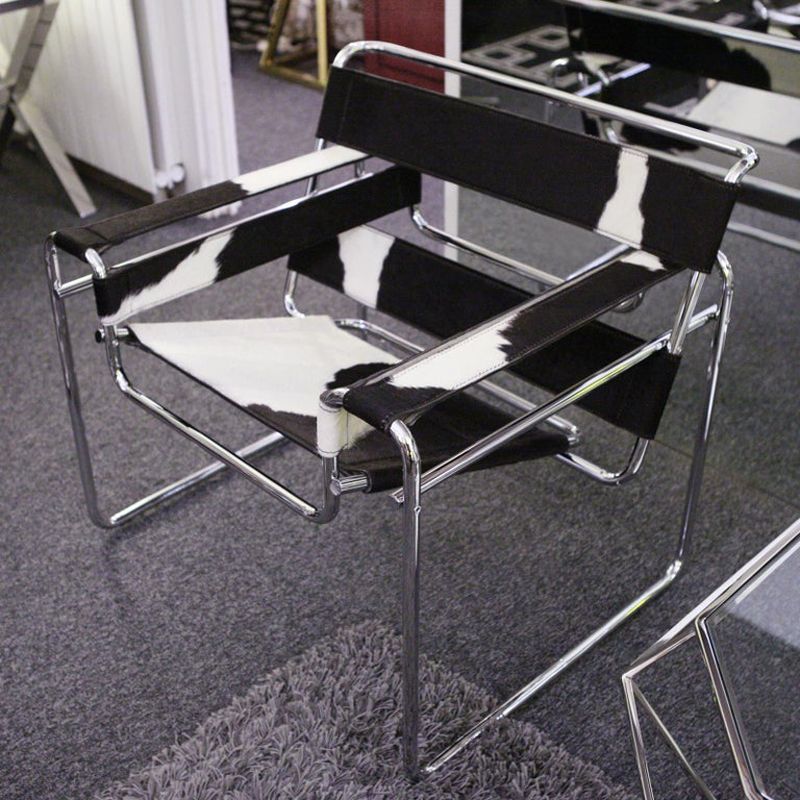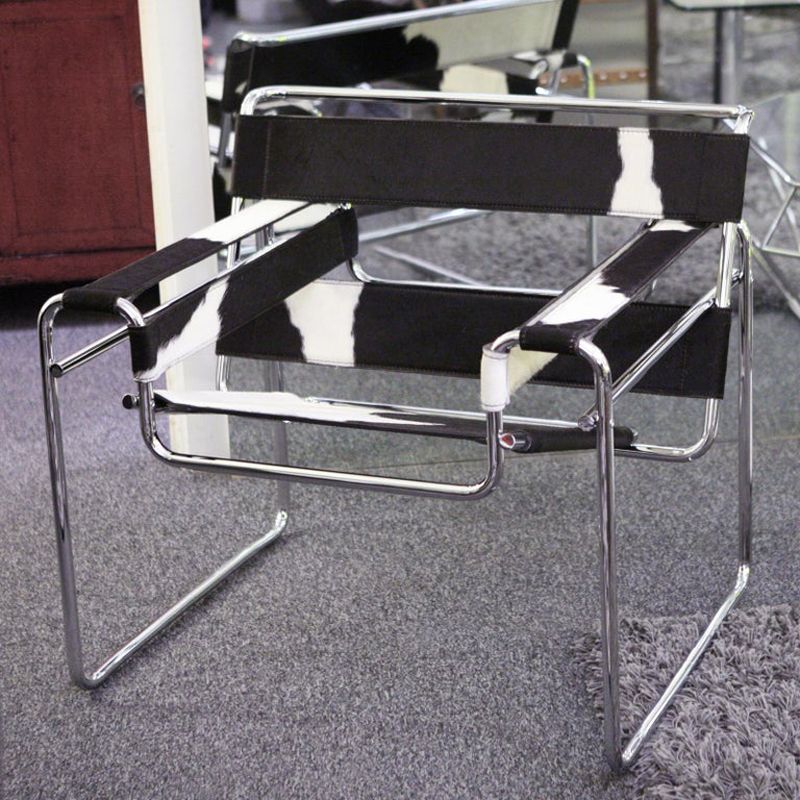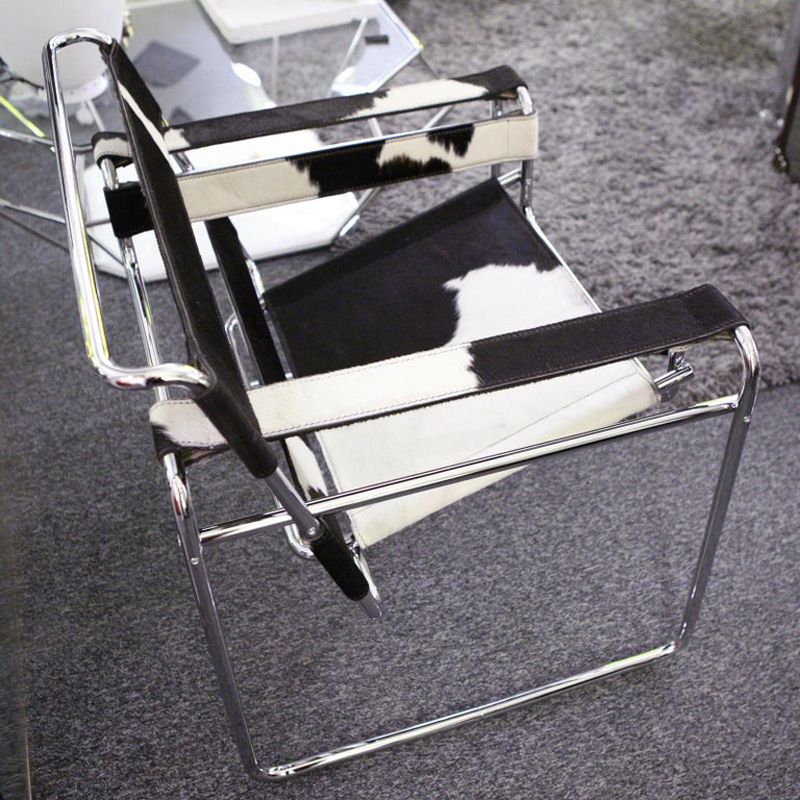Marcel Breuer Wassily chair cowhide version
Material: Micro leather straps, stainless steel frame
Size: w31''x d29'' x h29''
CBM:0.55
产品描述



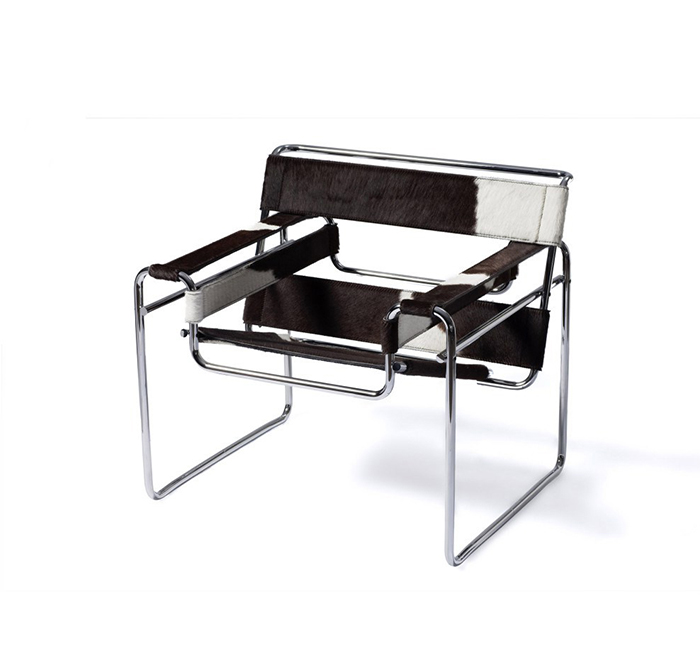
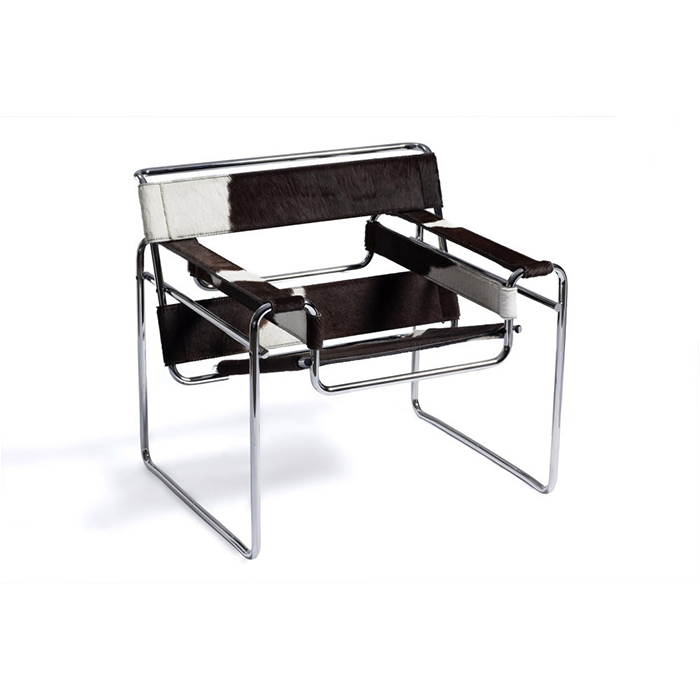
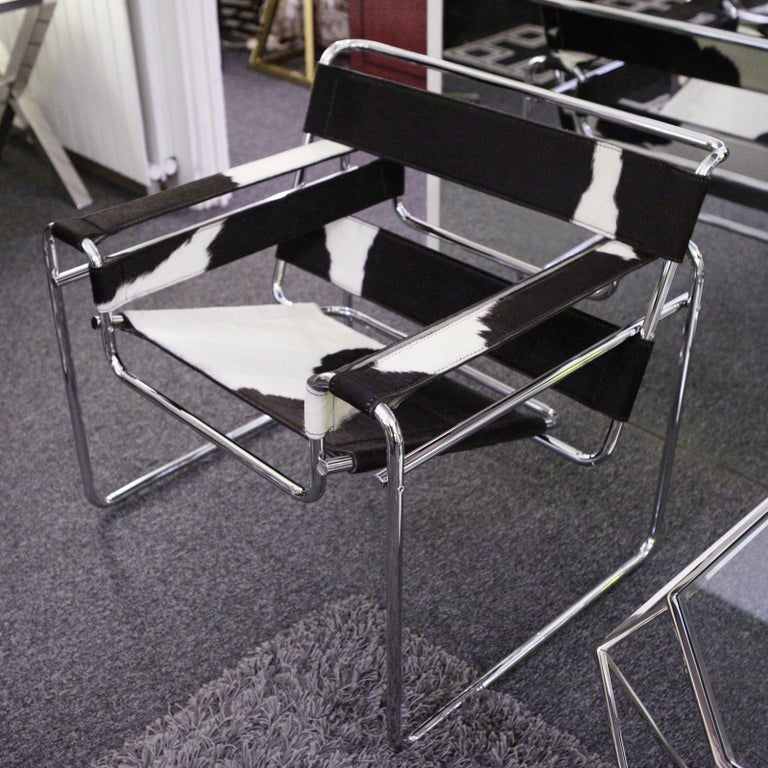

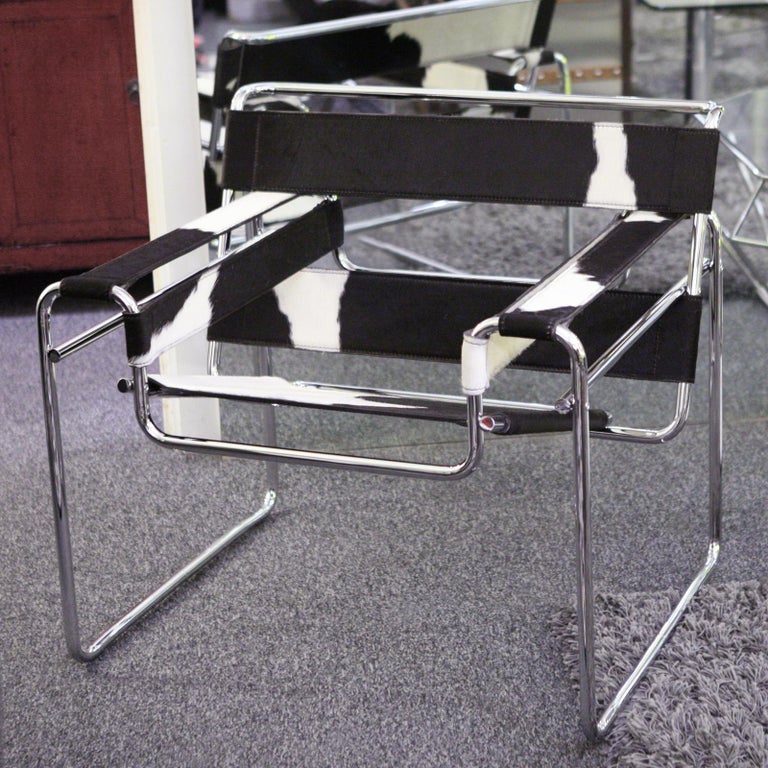

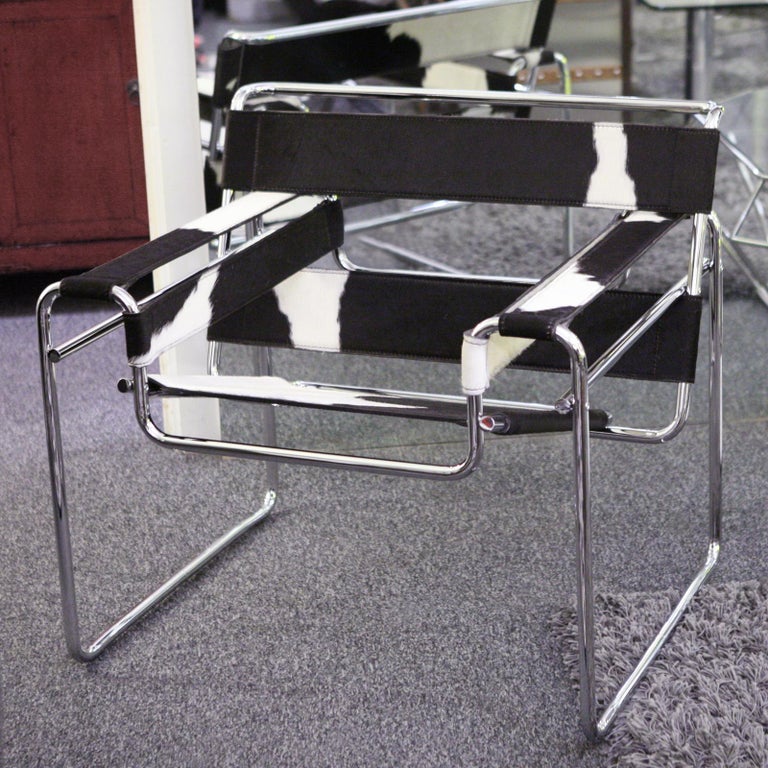

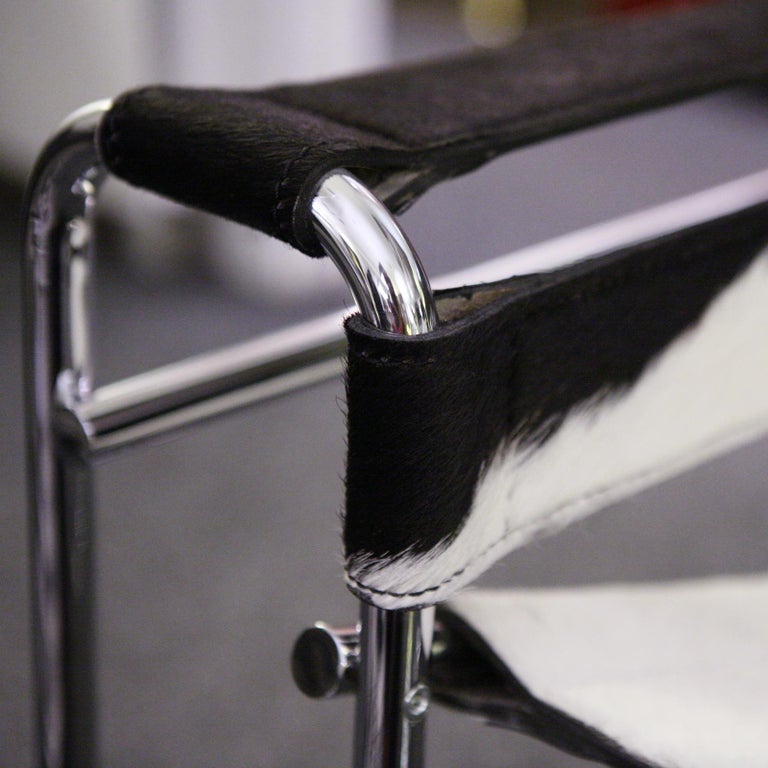
Wassily chair
With Mannesmann's seamless steel pipes, the new application of this material suddenly became possible. In the bicycle industry, this is reflected in the sturdy and lightweight bicycle frame and handlebars, reducing the slight shock waves that were reliably transmitted on the road at that time. As expected, one day while riding his steel framed Adler bicycle in Dessau, Germany, Bloyer glanced down, not only impressed by the technical efficiency of his car, but also by the shiny curves of his polished handlebars - he returned with the prototype of the Wassily chair (1925), named after his friend and Bauhaus member Wassily Kandinsky.
An early 20th century Adler bicycle provided by Fetton
As Robert McCarthy wrote in Felton's Brauer, "Brauer learned to ride it by traveling long distances in the city. He was impressed by the strength and weight of his bicycle because it was made of steel pipes. This seemingly indestructible material can be bent into the shape of a handlebar, easily supporting the weight of one or two riders; why can't it be used to make furniture?" So he began designing chairs, bending steel into this or that - an almost non-existent frame, paving the way for chairs produced on a large scale. This chair transcends aesthetics and functionality, which is something that the design world has yet to explore. The field.
This chair itself is a symbol of that era, and the new advances in steel pipe manufacturing have made its design possible (in fact, this is the first furniture to use this technology). Upon closer inspection of its materials, it will be found that this chair is only made of steel and fabric or leather, including seats and backrests. However, it is precisely from these materials that this highly influential chair emerged, with its smooth, minimalist, and ultra practical contours being produced on a large scale, in sync with the accelerated development of industry in the 20th century. Wassily chairs appear in modern architects' homes and design schemes, such as Hans Scharoun Robert Mallet Stevens, Aino, and Alvar Aalto, who saw chairs as inspiration and stimulation for his curved plywood design, which will emerge in the later part of that century.
This coveted chair still attracts design enthusiasts and collectors. It won the Museum of Modern Art Award in 1968 and achieved great success in the 21st century. For those who want a Vasily chair, this design can be purchased through Knoll International, which has taken over the production of this iconic design since 1995 for just over $3000.
